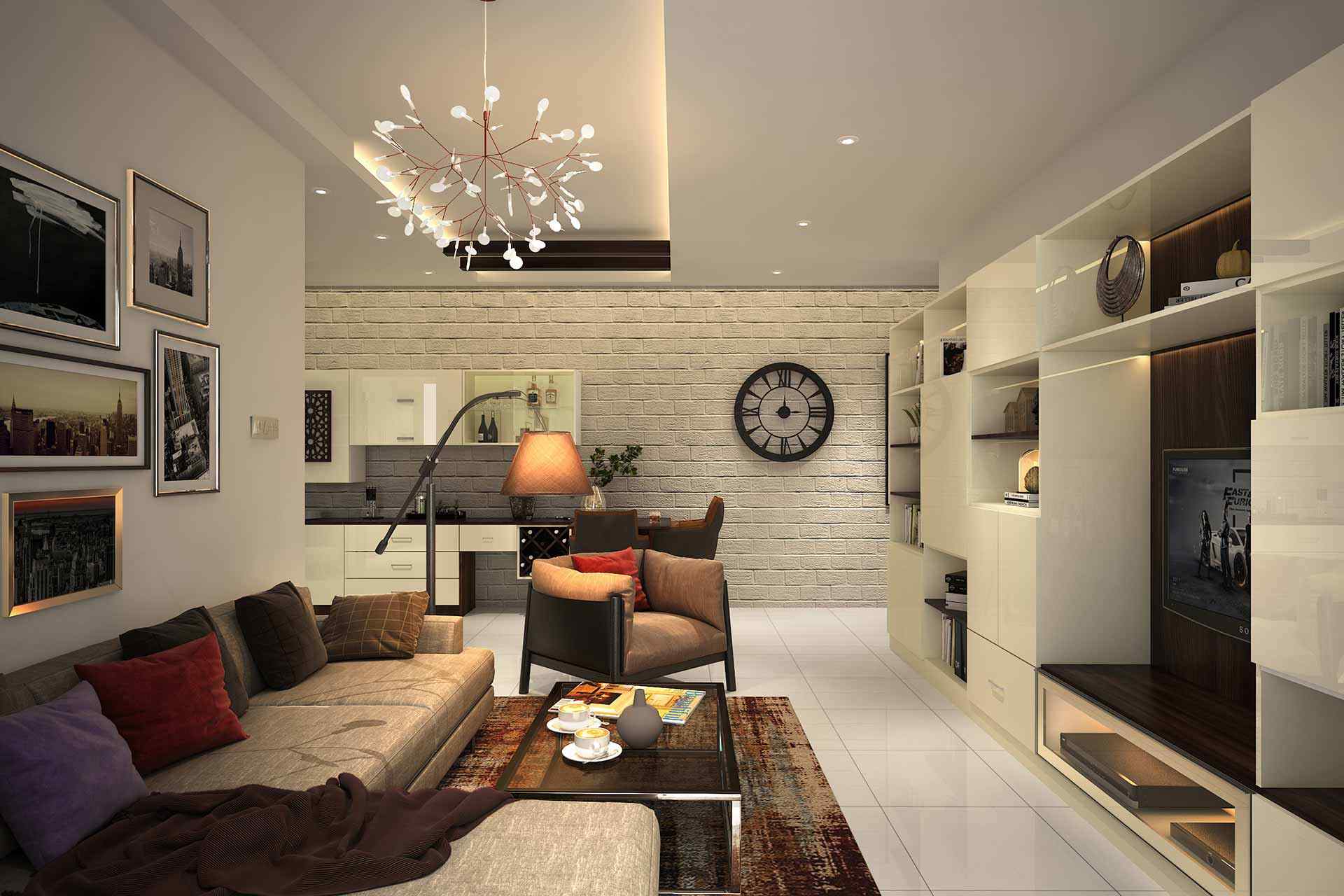Any area in your house can be transformed by changing the ceiling lights to suit your mood and needs. In addition to illuminating your room, they help create the atmosphere you choose and enhance its visual appeal. Choosing the perfect ceiling lights for your house, though, can be a challenge due to the wide variety of alternatives available today. If you’re new to ceiling lights but want to learn everything you can about them so you can design the ideal lighting scheme for your house, this guide is for you.
Why The Right Ceiling Lights Matter?
Before delving into the specifics of selecting ceiling lights, it’s essential to understand why they matter so much. Lighting is not just about banishing darkness; it’s about enhancing the functionality and atmosphere of your living spaces. The right ceiling lights can:
- Illuminate Your Space Effectively
The primary purpose of ceiling lights is to provide adequate illumination. Whether you’re reading, cooking, working, or simply relaxing, having the right amount of light in the right places is crucial for comfort and convenience.
- Set The Mood
The way lights are placed in a room may greatly influence the ambiance. While cool, bright light can energize a room, soft, warm light can make it feel pleasant and welcoming. You can set the mood you want in every room with the correct selection of ceiling lights.
- Enhance Aesthetics
There is a vast variety of styles, sizes, and finishes available for ceiling lights. They can be the center of attention or they can complement your existing furnishings. Lighting up your home with well selected ceiling lights is a great way to express your individuality while also improving the space’s general appearance.
- 4. Improve Energy Efficiency
With the shift towards energy-efficient lighting, choosing the right ceiling lights can help reduce your energy consumption and lower your electricity bills. LED and other energy-efficient options not only save money but also benefit the environment.
Factors To Consider When Choosing Ceiling Lights
We will now go over the criteria you should use to choose the best ceiling lights for your house now that you know how important they are:
- Room Purpose And Function
The lighting needs of different spaces might vary greatly according to the different roles they serve. As an illustration: Having both general-purpose ambient light and specific job lighting in a living room is ideal for most people.
- Kitchen: Bright, task-oriented lighting is essential for food preparation, while under-cabinet lighting can enhance the workspace.
- Bedroom: Lights that are gentle and warm are great for setting a soothing mood, while reading lamps placed by the bed provide ample illumination for reading.
- Bathroom: If you want to do things like apply makeup or shave, you need light that is both bright and uniformly spread.
- Dining Room: You can make a dining room feel more inviting by using both ambient and accent lighting.
To figure out what kind of lighting and how much of it each space needs, you need to know what each room is used for.
- Ceiling Height
Ceiling height is a critical factor in selecting ceiling lights. Different fixtures are suitable for various ceiling heights:
- Low Ceilings: Flush mount or semi-flush mount fixtures are ideal for low ceilings, as they sit close to the ceiling and don’t hang down too far.
- Standard Ceilings: Standard ceiling heights (usually 8 to 10 feet) are suitable for the majority of ceiling lights.
- High Ceilings: Pendant lights and chandeliers work well in rooms with high ceilings, as they can hang down and provide adequate illumination without feeling cramped.
- Style And Aesthetics
Consider your home’s overall style and decor when choosing ceiling lights. Whether your home has a modern, traditional, rustic, or eclectic design, there are lighting options that can complement and enhance the existing aesthetics. Pay attention to the fixture’s design, finish, and materials to ensure they align with your interior decor.
- Light Color Temperature
The color temperature of light can impact the mood and feel of a room:
- Warm White (2700k-3000k): Any room, including bedrooms, living rooms will benefit from this warm and welcoming atmosphere.
- Cool White (4000k-5000k): Provides a more energetic and vibrant atmosphere, suitable for kitchens, offices, and workspaces.
- Daylight (5000K-6500K): Mimics natural daylight and is ideal for areas where task lighting and productivity are essential, such as bathrooms and home offices.
- Energy Efficiency
Opting for energy-efficient lighting options not only reduces your carbon footprint but also saves you money on your electricity bills. LED (Light Emitting Diode) lighting is an excellent choice for its long lifespan, low energy consumption, and various color temperature options.
- Dimming Capability
Consider whether you want your ceiling lights to have dimming capability. Dimmable lights offer flexibility in adjusting the light intensity to suit different occasions and moods. Ensure your chosen fixtures are compatible with dimmer switches if this is a feature you desire.
- Size And Proportion
You want your ceiling lights to be in harmony with the room’s dimensions and style. Oversized fixtures can overwhelm small spaces, while too-small fixtures may not provide adequate illumination in larger rooms.
- Installation And Maintenance
Choose ceiling lights with installation and maintenance ease in mind. While some fixtures may be best left to the pros, others are perfect for those who want to tackle the installation task on their own. Also, to make sure they last a long time, pick fixtures that are easy to clean and maintain.
- Budget
You may find ceiling lights in a broad price range. If you want to limit your selections and avoid going overboard when shopping, make a budget beforehand. Always remember that high-quality fixtures are usually an investment that pays off later.
Types Of Ceiling Lights
Now that you have a better understanding of the factors to consider, let’s explore the different types of ceiling lights available:
- Flush Mount Lights
Lights that are flush attached to the ceiling don’t have any space between them and the ceiling. They are ideal for low-ceiling spaces and provide even ambient lighting. Flush mount lights come in various styles and designs to suit different aesthetics.
- Semi-Flush Mount Lights
Semi-flush mount lights are similar to flush mount lights but hang slightly lower from the ceiling. They provide a bit more depth and style while still being suitable for rooms with lower ceilings. They come in a wide range of designs, making them versatile for various decor styles.
- Pendant Lights
A rod, chain, or cord hangs from the ceiling to support pendant lights. Dining rooms, kitchens, and foyers frequently feature them because of their ability to serve as room focal points. You can build a plethora of different looks with pendant lights because they come in different sizes, designs, and materials.
- Chandeliers
Chandeliers are elaborate and decorative light fixtures that are typically hung in dining rooms, entryways, or large living spaces. Elegance and sophistication are infused into a room by their numerous arms and ornamental features.
- Track Lighting
Track lighting consists of a linear track with changeable fixtures that can be moved along the track to direct light where needed. It is ideal for highlighting artwork, accenting specific areas, or providing directional lighting in kitchens and living spaces.
- Recessed Lighting
Recessed lighting, also called can lights or downlights, is put into the ceiling, creating a sleek and minimalistic look. They are versatile and can be used for general illumination, task lighting, or accent lighting. Recessed lighting works well in various rooms, including kitchens, bathrooms, and hallways.
- Ceiling Fans With Lights
Ceiling fans with integrated lights offer both cooling and illumination in one fixture. They are ideal for bedrooms, living rooms, and outdoor spaces where airflow and lighting are needed simultaneously.
- Under-Cabinet Lighting
Under-cabinet lighting is primarily used in kitchens to provide task lighting for countertop workspaces. These lights are installed beneath cabinets to illuminate the area below and make food preparation easier.
Conclusion
Choosing the perfect ceiling lights involves considering a range of factors. When choosing ceiling lights, it is important to balance functionality with aesthetics. By evaluating your lighting needs and preferences in each room you can create an inviting home that reflects your style and improves your quality-of-life. If you decide to go with flush mount lighting, pendant lights, crystal chandeliers, or other types of ceiling fixtures, it will make a big difference in the atmosphere and functionality. Take your time and explore all the options to find the perfect ceiling lighting for your home.



































